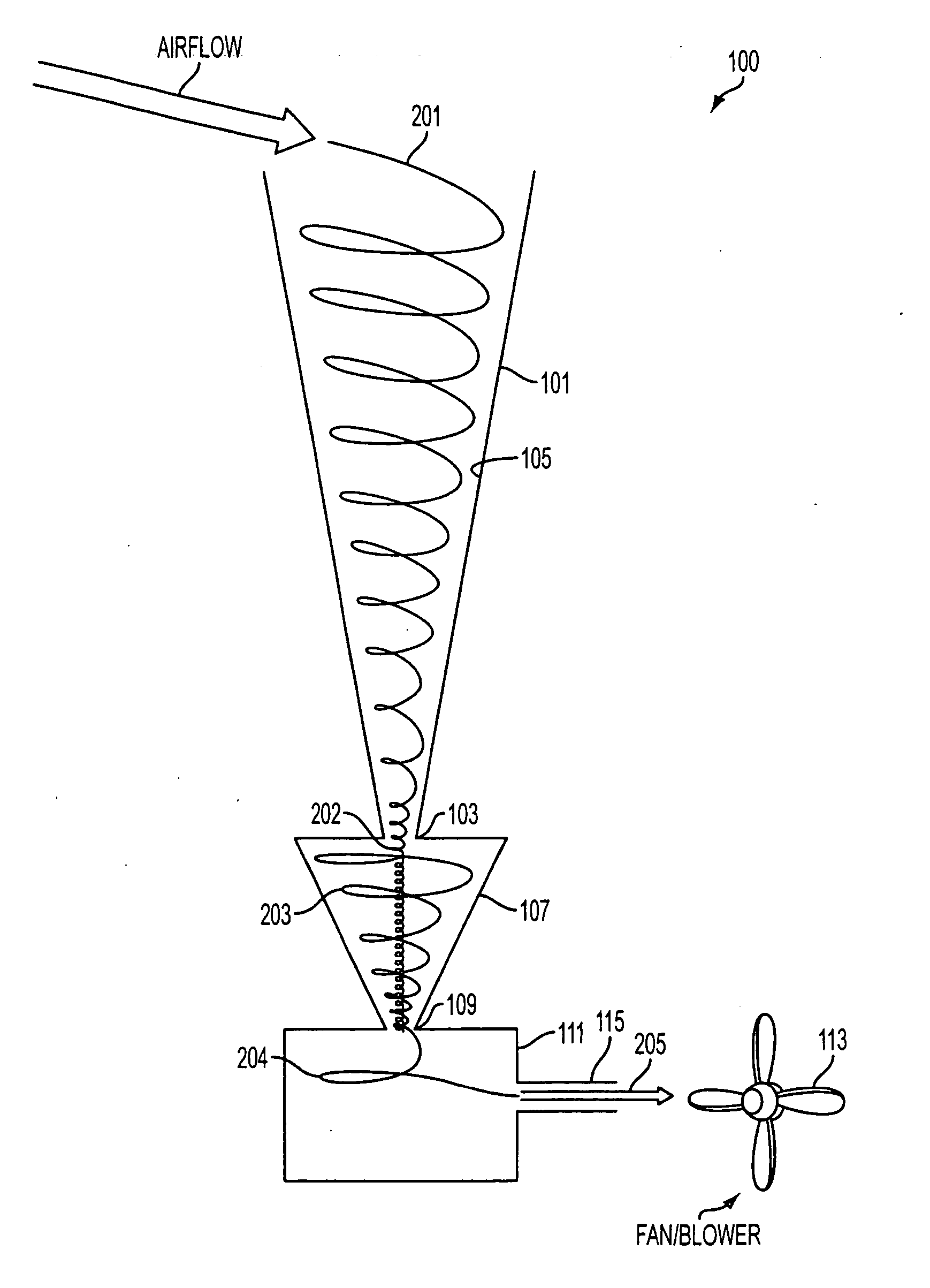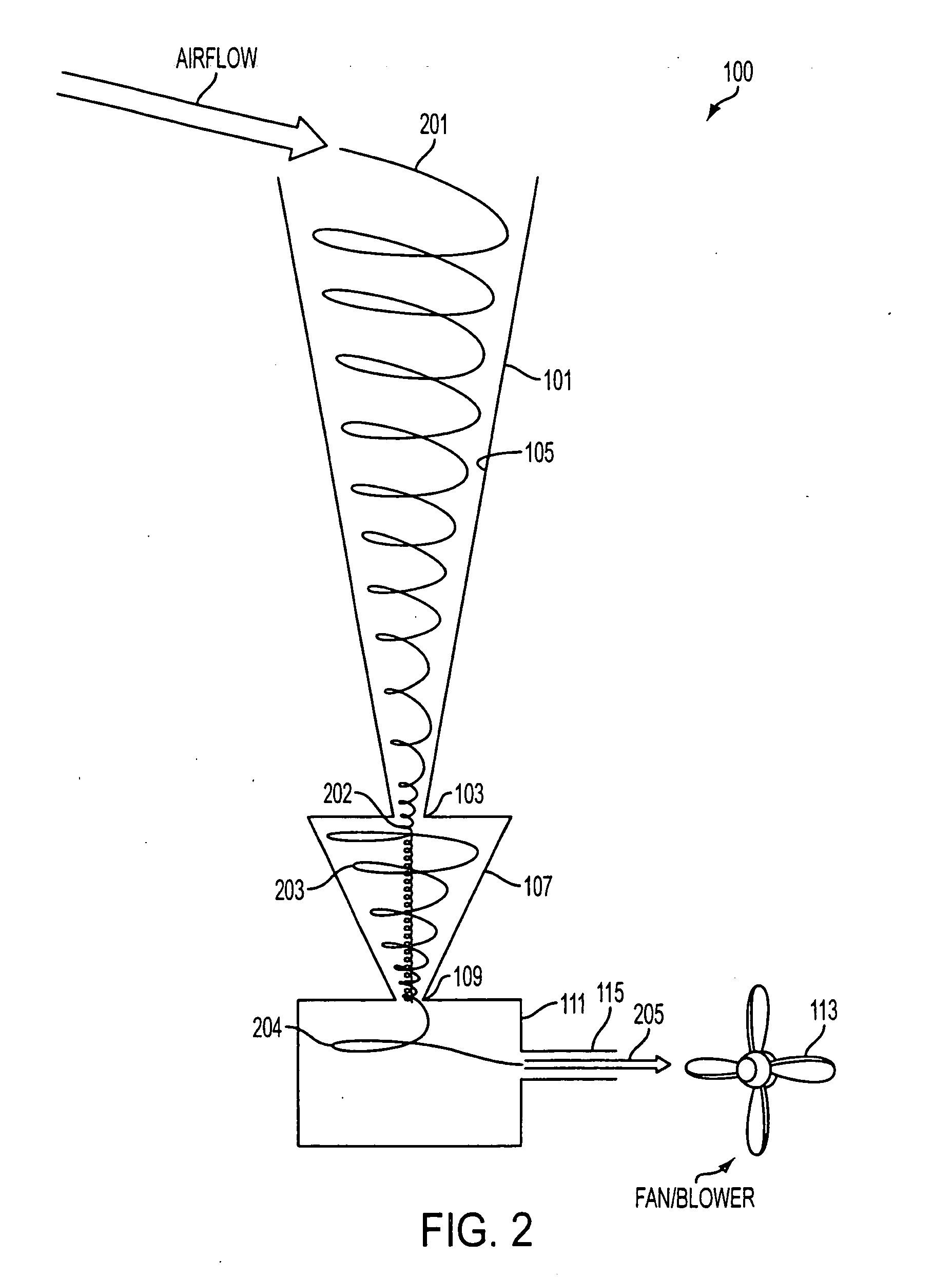Cyclonic separator with secondary vortex break
- Summary
- Abstract
- Description
- Claims
- Application Information
AI Technical Summary
Benefits of technology
Problems solved by technology
Method used
Image
Examples
Embodiment Construction
)
[0030]FIGS. 1 and 2 provide for different views of an embodiment of a cyclonic separator (100). The separator has three major components which in this embodiment are arranged vertically to each other. This arrangement provides a simple design for connection to related structures and other equipment, but the vertical orientation of the cyclone is not necessary to achieve proper performance. From the top to the bottom, a preferred embodiment includes a primary separator (101), a primary vortex break (107) and a secondary vortex break (111). While the preferred embodiment is arranged in this manner, the system can be rotated in space and still function. This arrangement, however, provides for benefits as gravity will help in the separation. Note that the sub-system comprised of the primary separator (101) and the primary vortex break (107) may, in an embodiment, be replaced by a primary separator (101) with no primary vortex break (107) being present. In an embodiment of the invention...
PUM
| Property | Measurement | Unit |
|---|---|---|
| Size | aaaaa | aaaaa |
| Size | aaaaa | aaaaa |
| Force | aaaaa | aaaaa |
Abstract
Description
Claims
Application Information
 Login to View More
Login to View More - R&D
- Intellectual Property
- Life Sciences
- Materials
- Tech Scout
- Unparalleled Data Quality
- Higher Quality Content
- 60% Fewer Hallucinations
Browse by: Latest US Patents, China's latest patents, Technical Efficacy Thesaurus, Application Domain, Technology Topic, Popular Technical Reports.
© 2025 PatSnap. All rights reserved.Legal|Privacy policy|Modern Slavery Act Transparency Statement|Sitemap|About US| Contact US: help@patsnap.com



